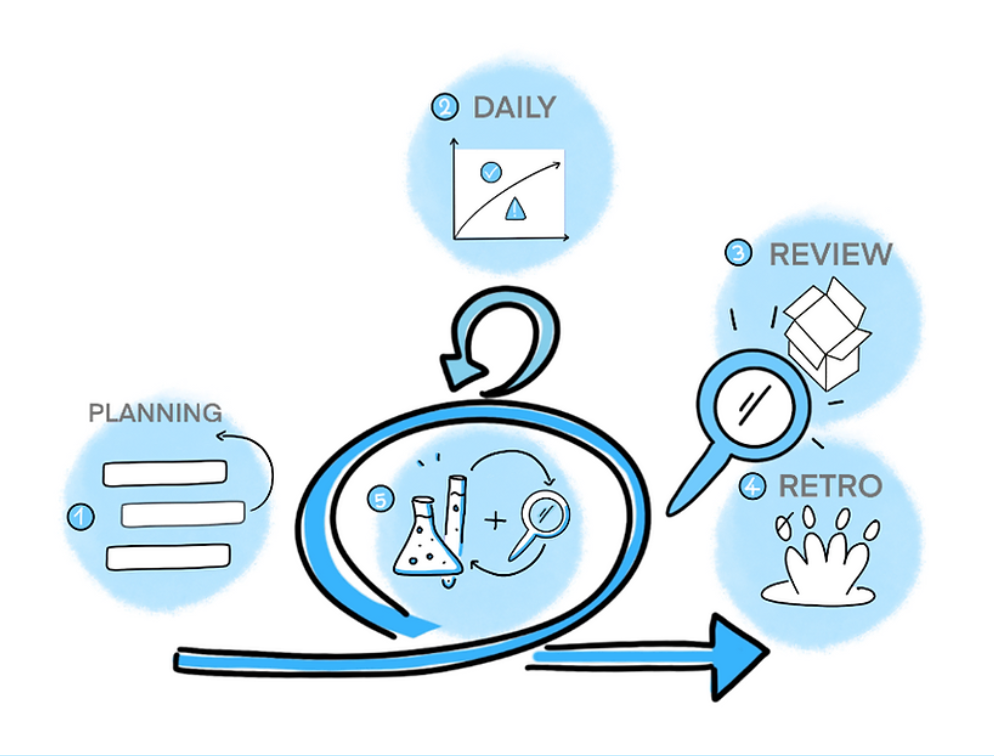
When I first started as Scrum Master in 2012 I saw the role very much as a guardian of the team process. And that was all. I ignored, at first, the potential of establishing the human connection in a deeper level brought by this position on a Scrum team, something today most Scrum Masters might see as obvious.
For those still discovering the human connection capabilities of the role I just want to make a quick case using my learnings on the topic of having individual conversations, regular one-on ones, with team members. Remember Scrum is not prescriptive and there is no rule on how to enable high performing teams. I would say today I am extremely partial to Scrum Masters holding one-on-one chats. That being said, there are pitfalls to watch out for.
On the positive
The most important thing is probably the ability to get to know more intimately someone, understand their personalities and their dreams. A Scrum Master cannot shy away from holding the mirror to the team, from showing potential improvement points to help the team grow. It is at the very essence of the role. Being comfortable with each team member helps elevate the trust and confidence in all parties when those harder discussions need to take place.
Beyond knowing how many dogs a team member has and where they live, one-on-ones, especially those hosted over a nice, informal coffee in the lounge, give the Scrum Master the ability to help each individual team member in a more profound level. Although a little controversial to some, I find you can spot and help alleviate sources of conflict within the team before they grow out of proportion. You can help the people gain perspective by sharing what you see.
On a similar note, often times you will have one team member who does not feel comfortable exposing their ignorance on a topic for the rest of the team. Maybe Sam is taking a lot longer to catch up on the estimation technique the team is using. Maybe Jane does not fully buy-in on pairing and feels exposed to have to share the keyboard with a colleague. Being able to address the personal discomfort and tailor some teaching to the individual is so invaluable. You can preserve people’s feelings while still address the growing opportunity. Not just by plain teaching “hey, this is how this concept works” but also by mentoring: “Hey, let me tell you what I have tried in a similar situation”.
An underrated part of the Scrum Master role is coaching. Coaching is unlocking people’s full potential. Coaching is listening and asking questions so that the other person finds their way and discover things. Having the team members being open to discovery and explorations is a component of shooting for a high performing team. And although a lot of the coaching can and should happen in a team setting, offering a space in which individuals can brew their best insights is a helpful practice. Not to mention very rewarding for the Scrum Master as well!
Be aware
It is all about helping the team and individuals. But I learned to pay attention to a few things while setting up a healthy practice of one-on-ones.
The first one is to make sure you do one-on-ones with everybody, at least at first, and let each individual decide if they want to continue or not. Then, let them know how to best engage you if they want to pickup the one-on-ones again after having stopped them. If you just start with a couple of people you might be less overwhelmed alright, but people might wonder why you chose Kathy or Franklin. Favoritism? Do they have a problem? Gossip and too much imagination can spin off of this.
Still on the gossip side, do not let the one-on-ones become chats about others. It is about you and the person in front of you. We might certainly need to mention third parties to explain or understand situations or just as a casual chat. But letting people vent too much about someone else’s action might instill a laissez-faire feeling as if it was OK to gossip about people. Remind your people this is “me” time for them. Why waste time on someone else’s problems?
Therapists are expensive for a reason and the Scrum Master, in very few exceptions, is no licensed therapist. It is important to recognize when we can and when we cannot help our team member in certain chats and do our best to send them on a direction of someone more qualified if the issues and opportunities they want to discuss are beyond Agility, Scrum and healthy team practices. Similarly, sometimes the conversations are more HR cases than Scrum Master help. Keep a keen eye, but do not just dismiss your team member. Guide them. Discuss with them if a therapist or HR folk should be involved and explain why you see things this way.
Because it is all about the trust! Imagine if you just g to your HR and mention something you learned in your last one-on-one. These are private, confidential conversations. You would have just broken the trust, the hard earned trust, by taking action or sharing confidential information without asking for permission first. I would even say that more than asking permission, redirect the person to proper new services instead of acting as an intermediary. It is always best that people make their own decisions, no matter how hard they are. You are there for support only in such cases.
Last but not least, I learned to not let team members try to use me, the Scrum Master, as a way to fix their dysfunctions. A lot of team issues need kind but open and direct discussions with all members present. Just having team members complain to the Scrum Master _you!_ and hope that you will get all issues “fixed” is unfair and is a wreaking stance for your team. Use those opportunities to teach your team members the importance of honesty and feedback and when you feel up to it, explicitly coach them through the process.
In the end
It is very much a decision every Scrum Master must make for oneself. You are not forced to have one-on-ones and there is no hard and fast rule on how to avoid the pitfalls should you decide to host those chats with your team members.
With open communication and a kind heart I believe even the most beginner Scrum Masters can start doing one-on-ones early on as a way to help their teams. Remember to prepare for those and establish your own ritual on how to start and end those conversations. Ask for opinions and discover how others do them in the Scrum Master community around the world!
Interested in learning more about Scrum?
If you are interested in learning more about Scrum, check out my e-book. Scrum is very simple, and you can learn how to use it in a day. If you never worked with agile before it most certainly introduces you to agility in a very practical way.

Become a better agile team facilitator
No matter your choice of framework (and Scrum is but one of them), there is actually a rather simple way to approach how teams work in agile. They plan, execute, and the adjust work they do and how they do it in a rather unique way. And that, my friend is consistent independent of any framework used. Isn’t that cool?
If you’d like to learn how it all works and even more so, how a facilitator for agile teams (that would be YOU) positions themselves, you’ll probably like to join the upcoming cohort of the Agile Team Accelerator. Since 2015 I’ve been mastering how to coach individuals and teams on how to get more performance with agile .
That’s the place for you not only strip agile bare to your team, but also position yourself as a great agile team facilitator and get one step ahead in your personal leadership skills.



